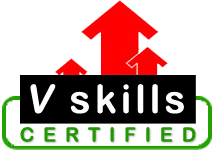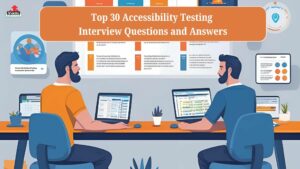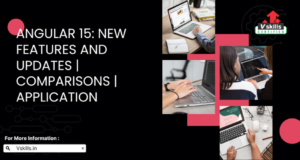Have you ever felt like your career in BPO or KPO could be a launchpad to something more analytical, high-stakes, and globally relevant? If that question struck a chord, you are not alone. Every year, thousands of professionals working in business process outsourcing (BPO) and knowledge process outsourcing (KPO) environments start wondering: Is there something more I could be doing with these skills? Is there a path that’s more aligned with the future of finance, technology, and global risk management? And one of the most promising, future-proof transitions is from BPO/KPO to AML (Anti-Money Laundering). It’s a shift that builds upon your existing strengths—like attention to detail, adherence to processes, and client handling—while opening doors to a career that’s analytical, compliance-driven, and mission-critical for the global financial system.
Here’s the good news: you are sitting on a solid foundation. BPO and KPO jobs often involve client servicing, meticulous attention to detail, process adherence, handling confidential information, and meeting stringent Service Level Agreements (SLAs). These aren’t just checkboxes on your performance sheet; they’re transferable skills that can open the doors to a whole new career trajectory—one that’s dynamic, purpose-driven, and increasingly in demand: Anti-Money Laundering (AML).
AML is no longer a back-office function. It has become a frontline defense mechanism for banks, fintechs, and financial institutions worldwide, particularly as global regulatory bodies intensify scrutiny and financial crimes become increasingly sophisticated. As a result, the demand for AML professionals has surged across sectors—from traditional banks to modern digital finance companies. And here’s where it gets even better: many of the competencies you’ve honed in your current role—be it in transaction processing, compliance documentation, or client onboarding—are directly relevant to AML.
Hidden Strengths of BPO/KPO Professionals
Working in BPO/KPO builds a strong foundation in areas that are critical in Anti-Money Laundering (AML) roles, such as:
- Process orientation and accuracy – essential for transaction monitoring and compliance tasks
- Client interaction and stakeholder management – crucial in handling escalations and communicating findings
- Adherence to SOPs and SLAs – aligns with regulatory compliance and documentation rigor
- Working with confidential and financial data – a direct overlap with AML responsibilities
These skills are not just transferable—they’re highly valuable in the financial crime compliance world.
Why AML is the Next Big Opportunity?
With the rise in financial crimes, money laundering schemes, and evolving regulatory frameworks, AML has become one of the fastest-growing domains in the BFSI sector. Organizations worldwide are strengthening their compliance teams, and they’re looking for professionals who can bring both discipline and agility to the table.
What is making AML roles increasingly attractive?
- High global demand for skilled AML professionals across banks, fintechs, and regulatory bodies
- Structured career paths with opportunities to grow into risk management, compliance leadership, or even investigative roles
- The thrill of real-world impact – your work helps stop illegal activities and protect the financial system
What you will Learn in this Blog?
This blog is your roadmap to transitioning from BPO/KPO to a rewarding career in AML. We’ll cover:
- The key strengths and competencies you need to build
- How to leverage your current role to gain relevant experience
- Smart ways to upskill, position yourself, and break into AML—even without prior direct experience
Hidden Strengths of BPO/KPO Professionals
Working in BPO/KPO builds a strong foundation in areas that are critical in Anti-Money Laundering (AML) roles, such as:
- Process orientation and accuracy, essential for transaction monitoring and compliance tasks
- Client interaction and stakeholder management – crucial in handling escalations and communicating findings
- Adherence to SOPs and SLAs that align with regulatory compliance and documentation rigor
- Working with confidential and financial data – a direct overlap with AML responsibilities
These skills are not just transferable, they are highly valuable in the financial crime compliance world.
Why consider a shift from BPO/KPO to AML Complaince Domain?
If you have been working in a BPO or KPO role for a few years, chances are you have asked yourself—What’s next for me? You are reliable, process-driven, and great with data, but you may also feel like your work has become repetitive or disconnected from bigger business goals. Worry not, you are not alone. Many professionals reach this same crossroads. And for a growing number of them, the answer lies in a pivot to Anti-Money Laundering (AML).
AML is one of the fastest-growing domains in the financial world today—and it’s hungry for talent. Especially talent like yours. Let’s explore exactly why this move makes sense and why now is the perfect time to consider it.
World Needs More AML Professionals—And Fast
Every day, criminals around the world attempt to clean dirty money by pushing it through financial systems. These crimes are no longer isolated eventsthey are orchestrated, international, and increasingly sophisticated. To combat this, governments and regulators have turned up the heat on financial institutions.
What’s happening globally?
- Stricter regulations: Countries are tightening their Anti-Money Laundering laws, and banks are being held accountable like never before.
- Massive penalties for non-compliance: Multi-billion-dollar fines have become commonplace for institutions that fail to detect suspicious activities.
- Rise of digital finance: With online banking, fintech, and cryptocurrency adoption, the need for transaction monitoring has exploded.
- Chronic talent shortage: There simply aren’t enough trained professionals to fill AML roles. This is where the opportunity lies—for professionals ready to make the leap.
You could be part of the team that stops financial crimes, prevents funding for terrorism, and makes global systems safer. It’s meaningful, high-impact work, and demand is only growing.
Transferable Skills from BPO/KPO: You are more ready than you think
One of the most common questions is, “Can someone like me really move into AML?”
The short answer? Yes—absolutely.
Let’s break this down. In BPO and KPO roles, you’ve been trained to work in fast-paced, structured environments. You manage sensitive data. You know how to follow SOPs. You’re already doing quality checks, analyzing trends, and communicating with international stakeholders.
What makes your BPO/KPO background a strong asset in AML?
- Attention to detail: AML work often requires identifying small, suspicious anomalies in large volumes of data—sound familiar?
- Process-oriented thinking: Just like BPO roles follow step-by-step workflows, AML investigations follow compliance protocols.
- SLA and KPI discipline: Time-sensitive regulatory reporting and alert clearing needs the same urgency and accountability.
- Client interaction and escalation handling: Useful in roles like Know Your Customer (KYC), Customer Due Diligence (CDD), and case escalations.
- Working with international clients or data: Gives you exposure to cross-border regulations, cultural expectations, and professional standards.
Your existing skills are not just relevant—they are powerful. Many top employers actually prefer candidates who bring operational discipline from BPO/KPO backgrounds.
How to unlock a Smarter Career Path with better Pay and Purpose?
AML isn’t just a job—it’s a gateway to a real career. Many BPO/KPO roles hit a ceiling after a point. You may become a team lead or manager, but the work stays largely the same. AML, on the other hand, offers vertical and lateral mobility across compliance, risk, technology, and policy.
Let’s talk about what’s on the other side:
- Structured career growth: Start as an AML Analyst, grow into Senior Analyst, Team Lead, Compliance Manager, and eventually AML Officer or Head of Compliance.
- Work with a purpose: Each case you handle could be tied to preventing fraud, crime, or terrorism. It’s real-world impact, not just numbers on a screen.
- Cross-domain exposure: AML intersects with risk management, cybersecurity, fintech, forensic investigations, and regulatory tech (RegTech).
Diverse industry opportunities:
- Banks and NBFCs
- Fintech companies and neobanks
- Big Four consulting firms
- Global compliance consultancies
- RegTech startups are building AI tools to detect financial crime
AML roles are considered specialist functions and often come with a salary premium, especially as you gain certifications and experience. You will not only earn more, but you will be building a career that’s future-ready, internationally relevant, and respected across industries.
Ready to Move from Operations to Impact?
The transition from BPO/KPO to AML is not a leap into the unknown. It’s a smart, strategic pivot that sets you on a more meaningful, better-compensated path. But to make it happen, you’ll need to build a few specific strengths that align directly with what AML roles require.
Key Strengths to Build for AML Transition
So, you have decided that a move into the Anti-Money Laundering (AML) space makes sense. You are ready for a career with purpose, better pay, and long-term growth. But here’s the golden question: What should you focus on to be taken seriously as an AML professional, especially if you are starting from a non-AML background like BPO/KPO?
The truth is, you already have a head start. Now, it’s about sharpening the right strengths and speaking the language of compliance, risk, and regulation. Let’s explore the core capabilities that will not only make you employable in AML but also help you thrive once you are in.
1. Analytical Thinking & Investigation Skills
At the heart of AML lies one mission find the red flags in a sea of data.
As an AML analyst, you will be expected to examine customer behavior, monitor large volumes of transactions, and spot patterns that don’t quite add up. This requires not just technical knowledge but a detective’s mindset—curious, logical, and relentless.
How to build it?
- Practice case studies: Study real-world AML investigations (many are available online) to understand how professionals identify suspicious activity.
- Use platforms that simulate transactions or fraud detection scenarios.
- Challenge yourself with logic-based games or puzzles that strengthen pattern recognition and decision-making.
Even if you have worked in non-analytical roles, start documenting patterns in your current work. How often does a customer repeat an action? What’s the turnaround time across data sets? Build your muscle for data storytelling.
2. Regulatory Knowledge: Know the Rules of the Game
AML is not just about transactions—it’s about complying with global and local regulations that govern financial conduct. From the FATF (Financial Action Task Force) to KYC (Know Your Customer) and PEP (Politically Exposed Persons) classifications, there’s a whole vocabulary and legal framework you will need to get familiar with.
Key concepts to learn
- KYC, CDD (Customer Due Diligence), EDD (Enhanced Due Diligence)
- FATF recommendations and red flags
- OFAC (Office of Foreign Assets Control) sanctions
- PEPs, UBOs (Ultimate Beneficial Owners), and shell companies
How to start?
- Enroll in entry-level AML certification courses (e.g., Vskills Certified AML Professional, ICA Certificate, or ACAMS prep courses).
- Follow LinkedIn compliance experts and read short updates from FATF, FinCEN, and RBI (if in India).
- Watch YouTube channels or webinars on AML investigations and compliance tips.
Treat this like learning a new language. The more you immerse yourself in the jargon, the more fluent—and confident—you’ll become.
3. Embracing a Risk-Based Approach: Prioritizing What Matters
In AML, not every transaction is treated equally. A basic banking transfer might pass with minimal checks, but a large international wire transfer from a high-risk jurisdiction? That’s another story. This is where the Risk-Based Approach (RBA) comes into play.
What do you need to know?
- Understand how institutions rate customer risk (low, medium, high) based on geography, industry, transaction volume, etc.
- Learn the difference between inherent risk and residual risk.
- Recognize how risk scores drive decisions, like enhanced monitoring or additional due diligence.
How to build it?
- Take mock KYC or case analysis exercises where you assign risk scores.
- Study AML typologies—common methods used by money launderers, and what flags them as suspicious.
Your background in SLA monitoring or process audits in BPO/KPO is a great foundation. Now, it’s just about applying that logic to risk detection.
4. Familiarity with Financial Products and Systems
You don’t need to be a banking expert on Day 1—but having a working knowledge of basic financial instruments and how money moves will put you miles ahead.
Key areas to brush up
- Types of bank accounts (savings, current, NRE/NRO, corporate, etc.)
- SWIFT codes, wire transfers, ACH, RTGS
- Trade finance instruments (LCs, bank guarantees)
- Basics of insurance, credit cards, and mutual funds
How to build this?
- Use free resources from banks and fintech blogs to understand common products.
- If you worked on a finance account in BPO (e.g., AP/AR, banking, credit cards), highlight that experience as a bridge into AML.
Make a glossary of financial terms with real examples. It will help you breeze through interviews and case scenarios.
5. Communication and Report Writing: The Unsung Hero of AML
One of the most critical but underrated skills in AML is the ability to write clearly and concisely. Why? Because SARs (Suspicious Activity Reports) and investigation summaries must be factual, evidence-based, and compliant with legal standards. Bad reporting can mean missed red flags—or worse, legal trouble.
What to practice?
- Writing objective summaries of what happened, why it’s suspicious, and what action is recommended.
- Structuring a report so that compliance officers and regulators can act on it quickly.
- Using professional, neutral language—no speculation, only facts.
How to improve?
- Study sample SARs available online (many are anonymized for training).
- Rewrite reports or notes from your BPO/KPO experience in this style.
- Take basic business writing or email writing courses to sharpen clarity.
Remember, your writing becomes part of the legal record. Your words matter more than you think.
6. Getting Familiar with AML Tools and Tech
No modern AML function operates without software, and some of these tools are quite powerful. Whether it’s Actimize, SAS, ACI, or a custom-built monitoring tool, you’ll be expected to know your way around dashboards, workflows, and alerts. But don’t worry—you don’t need hands-on access to every system right now.
Focus on learning
- How a transaction monitoring system works
- What a typical alert looks like and how to clear or escalate it
- Basics of using Excel, SQL, or data visualization tools (especially for junior analyst roles)
Where to practice?
- Explore free SQL tutorials online (SQLZoo, Mode Analytics, etc.)
- Use Excel for mock data sorting and filtering exercises
- Some online courses simulate AML alerts in a sandbox environment
Put these tools on your resume—even basic knowledge of them gets attention from recruiters, especially when combined with certifications and strong communication skills. You are not starting from zero—you are starting from Experience. The strengths above are not random—they’re deliberately mapped to what hiring managers look for in AML roles. You don’t need to be perfect in all of them on Day 1. But building a plan to improve in each area will set you apart from the competition.
Next up, how do you get that first foot in the door while still juggling your current job or feeling unsure about your direction? Let’s explore how to begin the transition smartly, even before you apply.
How to Kickstart Your Transition from BPO/KPO to AML
You’ve got the motivation. You’ve started building the right skills. But now comes the part that many people hesitate over – “How do I actually start this transition, especially while I am still working full-time?”
The good news? You don’t need to wait for the perfect opportunity or resign from your current job. With the right steps, you can build your AML foundation, make your profile visible, and even land interviews—without putting your current role at risk. Here’s a practical roadmap to start your transition into AML smartly and sustainably.
Step 1 – Take a Foundational AML Certification
Before you deep-dive into technicalities, start with a solid, beginner-friendly certification that gives you the basics of Anti-Money Laundering and regulatory compliance. This step is crucial for two reasons:
- It adds credibility to your resume, even if you don’t have AML experience.
- It gives you the language and confidence to speak about AML concepts in interviews.
What to consider?
- Vskills Certified AML Professional – Affordable and recognized in the Indian job market.
- ICA Certificate in AML – Globally recognized, ideal for beginners.
- ACAMS Foundations of AML – A lighter entry into the globally acclaimed ACAMS track.
Combine with:
- Free AML courses on platforms like Coursera, edX, or YouTube for practical knowledge.
- Self-learning through PDFs, blogs, podcasts, and regulatory websites like FATF, FinCEN, and RBI.
Certifications don’t just show knowledge—they show initiative, and employers value that more than you realize.
Step 2 – Start Following AML Trends and Conversations
Staying informed is half the game in AML. Regulations change rapidly. What’s legal today could be a red flag tomorrow. Start immersing yourself in the world of compliance, investigations, and financial crime, even if just for 15 minutes a day.
Easy ways to begin
- Follow AML influencers and professionals on LinkedIn (search hashtags like
#AML,#Compliance,#FinancialCrime) - Subscribe to updates from FATF, FinCEN, RBI, or local regulators.
- Read enforcement cases or penalties—what went wrong, why it happened, and what action was taken.
- Join AML webinars, summits, or free virtual meetups (often listed on LinkedIn).
Leave thoughtful comments on LinkedIn posts by AML professionals. You’ll start building a presence—and even land referrals down the line.
Step 3 – Showcase Transferable Skills in Your Resume
Most BPO/KPO professionals underestimate how much their existing experience already aligns with AML requirements.
What you need is a strategic revamp of your resume—one that highlights your relevant strengths, even if your job title doesn’t say “AML.”
Skills to emphasize
- Attention to detail – Key in transaction monitoring and alert reviews.
- SOP adherence – AML roles require strict compliance with workflows and regulations.
- Client interaction and data handling – Useful in KYC, onboarding, and risk analysis.
- Escalation and reporting – Similar to filing SARs and reporting unusual patterns.
Quick wins
- Replace generic job tasks with outcomes: “Processed 100+ daily transactions with 99.8% accuracy under SLA” sounds more AML-relevant than “Handled backend processing.”
- Add a section for Certifications & Compliance Exposure even if informal.
- Use keywords like “compliance,” “risk,” “KYC,” “data review,” and “process governance.”
Even before applying for an AML role, upload your updated resume to job boards with AML tags. You’ll start getting a feel for what recruiters are searching for.
Step 4 – Explore Internal Movement or Entry-Level Roles in AML
The best AML opportunity might be hiding where you already work. If you are employed in a BFSI-related BPO or KPO, your employer likely has internal roles in:
- Risk & Compliance
- Transaction Monitoring
- KYC/EDD Teams
- Fraud Prevention or Quality Audits
These teams often welcome cross-movement from operations staff, especially those who show genuine interest and upskill on their own.
How to explore?
- Talk to your HR or team lead about internal mobility options.
- Watch out for internal job postings or shadowing opportunities in compliance units.
- Join internal knowledge-sharing sessions, if available.
If your current company doesn’t offer a compliance pathway, look outward:
- Mid-sized banks, NBFCs, and fintech companies are often more open to hiring junior AML analysts or onboarding specialists from diverse backgrounds.
- AML/KYC outsourcing firms (like Genpact, WNS, or EXL) regularly hire BPO professionals for compliance projects.
When applying externally, target companies that serve international clients—your BPO experience makes you a strong cultural and operational fit.
You Don’t Need a Giant Leap—Just a Strategic Pivot
The truth is, you are already more ready than you think. Many of the skills, experiences, and habits you’ve built in your BPO/KPO journey map beautifully into the world of AML.
What’s important is that you:
- Show direction through certifications
- Stay visible through networking
- Tailor your messaging for impact
Next, let’s explore what mistakes to avoid so your transition doesn’t stall before it begins. After all, building strengths is essential—but sidestepping common missteps is what sets successful transitions apart.
Mistakes to Avoid During the Transition from BPO/KPO to AML
Shifting from BPO/KPO to AML can be exciting, but it’s also a career pivot that requires a strategic mindset. And sometimes, even the most enthusiastic professionals end up stalling their momentum because of a few avoidable missteps. So before you move forward, take a moment to avoid falling into these common traps.
1. Underestimating the Power of Soft Skills
Let’s bust a common myth right away:
AML isn’t just about crunching data or understanding regulations. It’s also about how you think, ask questions, collaborate, and communicate.
Sure, technical knowledge matters, but soft skills are what allow an AML analyst to make sound judgments, ask the right questions, and write reports that can stand up in court or regulatory review.
Don’t ignore:
- Critical thinking – Not every suspicious transaction is illegal. Can you spot patterns, anomalies, or intent?
- Curiosity – AML work often involves following the money trail and asking “why” repeatedly.
- Collaboration – You’ll often work with legal, compliance, and operations teams. Teamwork matters.
- Written communication – Suspicious Activity Reports (SARs) must be clear, concise, and legally sound.
Practice writing summaries of sample transaction cases. Share your reasoning in peer forums or LinkedIn posts. It builds confidence and visibility.
2. Thinking Only ACAMS Matters
Yes, ACAMS is the gold standard in the AML world—but let’s be real: it’s expensive, it’s global in focus, and it’s not the only path. Far too many professionals hold themselves back, thinking:
“I’ll start my AML career only after I get ACAMS.”
The truth – Recruiters don’t expect ACAMS from entry-level applicants. They want to see commitment, effort, and curiosity. That’s what beginner-friendly certifications from Vskills, ICA, or local training providers demonstrate well.
Smart strategy
- Start small with foundational certs that introduce concepts like KYC, CDD, UBO, and red flag indicators.
- As you gain experience or land an entry-level AML job, then invest in ACAMS—it will be more valuable and affordable.
Put your early certifications and learnings into practice by analyzing real-world enforcement cases and writing brief summaries or insights.
3. Not Networking Early Enough
You can take all the courses in the world and still stay invisible if no one knows you’re pivoting to AML. Many professionals think: “I’ll network once I’m ready.” But in AML, just like in any domain, opportunities come from conversations, not just job applications.
Start with
- Joining AML-focused LinkedIn groups like “Financial Crime Compliance,” “AML Professionals,” or local FinCrime forums.
- Following AML professionals and thought leaders. Comment on their posts. Share your own takeaways from courses or case studies.
- Attending virtual webinars and meetups—many are free and hosted by regulators, fintechs, or AML communities.
You would be surprised how a single LinkedIn connection or a thoughtful comment on a post can lead to a referral, mentorship, or interview invite. Create a “learning out loud” post series on LinkedIn. Share one AML concept you learned each week. It shows consistency and attracts like-minded professionals.
4. Waiting for the Perfect Job
This is probably the biggest roadblock for most career switchers.
“Should I wait for that full-time AML analyst role at a big bank?”
“What if I don’t get a permanent job right away?”
Waiting for the “perfect” job can cause months of delay, while others around you build experience—even in internships or contract roles. Every bit of AML exposure counts. Whether it’s a short-term contract, internship, or part-time compliance gig—it all builds your credibility and confidence.
Consider
- AML onboarding or KYC analyst internships—great for practical exposure to due diligence.
- Contractual AML projects—many firms need temporary help and often convert good performers to full-time roles.
- Risk support roles in fintechs or payment platforms—they often serve as gateways to AML/Compliance.
Think of your first AML role as a launchpad, not a destination. Once you get in, climbing up the ladder becomes easier and faster. At the end of the day, your career shift to AML is a journey, not a sprint. You won’t have everything figured out at the start, and you don’t need to. What you do need is clarity, commitment, and the courage to start—even small.
By avoiding these common mistakes, you won’t just save time, you will accelerate your entry into one of the most in-demand fields in finance today.
What are the tips to Stay Ahead?
So, you have built the right mindset, avoided common pitfalls, and are eager to break into AML. But how do you stay consistent and maintain your momentum in a competitive field? Here are practical, proven tips to not just start—but stay ahead of the curve.
Set a 6-Month Roadmap
Career pivots succeed when there’s structure—not just passion. A realistic, time-bound roadmap helps you build confidence and track progress.
Here’s a simple 6-month action plan:
Months 1–2: Build Knowledge
- Enroll in a beginner-friendly AML certification (like Vskills, ICA, or Udemy AML/KYC courses).
- Supplement with free courses from Coursera, edX, or YouTube to cover basics: money laundering typologies, regulatory bodies, KYC/CDD processes.
Month 3–4: Get Hands-On
- Simulate AML investigations using real-world case studies.
- Try freelancing or volunteering with NGOs or small compliance startups (some have online projects).
- Build a portfolio—document red flags, mock SARs, and customer risk ratings.
Month 5: Resume Revamp + LinkedIn Polish
- Update your resume to reflect transferable skills (SOP management, client communication, process accuracy).
- Add your certifications, projects, and any blogs or posts you’ve published.
- Create a strong LinkedIn summary that tells your “why” for transitioning into AML.
Month 6: Apply Smartly
- Target entry-level AML/KYC analyst roles, internships, and contract gigs.
- Consider BFSI companies, fintechs, and RegTechs—not just big banks.
- Keep networking—your connections can open doors faster than cold applications.
Break your 6-month goal into weekly sprints. One concept a day = 30 new ideas a month. Imagine how far ahead you’ll be in half a year.
Expert Corner
The shift from BPO/KPO to AML isn’t just a lateral move—it’s a strategic upgrade. You’re moving from execution to investigation, from process handling to risk analysis, and from a support role to a function critical to financial integrity. Your attention to detail, your ability to follow structured processes, your communication with clients across borders—all of this lays a solid foundation for an AML career.
What you need now is:
- A bit of structured learning,
- A few calculated moves,
- And a willingness to start small and grow big.
If you have ever felt like your BPO/KPO job is preparing you for something more meaningful, analytical, and globally impactful, AML might be your next chapter. Thinking about making the move? Start your journey with a basic AML course today and take that first bold step towards your future career in compliance and risk.





